Designed for Sony’s E-mount full-frame cameras, the Yongnuo YN 35mm F2S DF DSM is a compact and lightweight moderate wide angle and one of a growing range of lenses from a company best known for its wide range of photographic accessories. The lens offers both manual focus and autofocus, with a DSM stepping motor enabling quiet focusing and making the Yongnuo a suitable lens option for videographers.
The Yongnuo features 9 elements in 8 groups and comes with low-dispersion glass and an alloy body. A rubber seal on the rear mount adds some weather protection. Firmware can be updated via a USB Type-C port and overall design and construction are similar to the company’s 50mm and 85mm options.
Coming in at a very attractive price point, the Yongnuo has the potential to be a great prime option for budget-conscious Sony photographers. Let’s see how it shapes up in our DXOMARK Lens tests.
You can view the results for all tested lenses and create your own comparisons and in-depth analyses using our interactive image lens comparison tool.
Key specifications:
- Nine elements in eight groups
- Nano-multilayer coating process
- Seven blade aperture
- DSM AF motor
- 52 mm filter thread
- Minimum focus distance: 0.35 m (13.8″)
- Weight: 295 grams (0.65 lb)
Test results
We tested the Yongnuo YN 35mm F2S DF DSM on the 61 MP Sony A7R IV, where the camera sensor and lens together achieved a DXOMARK score of 43. This is only 2 points shy of the Sony Carl Zeiss Distagon T* FE 35mm F1.4 ZA, which is multiple times the price of the Yongnuo. Overall, the Yongnuo YN 35mm F2S DF DSM is a great option for Sony photographers who are willing to give up a tiny amount of image quality in exchange for some substantial monetary savings.
The Yongnuo YN 35mm F2S DF DSM delivers impressively sharp images, especially at the center of the frame. Astigmatism is well under control when stopping down a little, and distortion is well within acceptable limits. For photographers who can live with some chromatic aberration and vignetting the Yongnuo offers very decent image quality at a fraction of the price of Sony’s in-house options.
In-depth comparisons
We compared the Yongnuo lens to the Sony Carl Zeiss Distagon T* FE 35mm F1.4 ZA and the Sony FE Carl Zeiss Sonnar T* 35mm F2.8 ZA, all tested on the same camera. The Distagon offers a slightly faster aperture than the Yongnuo but is a lot bigger and heavier. Most of all, it’s also a lot more expensive. The Sonnar comes with a slower F2.8 aperture but is by far the most compact and lightweight lens in this comparison. It’s not quite as expensive as the Distagon but still in a noticeably higher price bracket than the Yongnuo.
You can see an overview of this comparison in our database.
Sharpness
The Yongnuo YN 35mm F2S DF DSM performed very well in sharpness (acutance) testing. It has good center sharpness at the maximum aperture of F2.0 achieving an acutance of just under 80%. There is a slight drop off towards the edges and corners where we measured acutance of around 75%. Stopping down to F4 will improve things at the edges and increase acutance to just under 80%. This is also where corner sharpness reaches its maximum.
When compared at F2.8, neither the Distagon nor the Sonnar can match the Yongnuo’s corner sharpness, but the Distagon is a touch better at the center. At F2.0 the Distagon’s sharpness advantage at the center is more noticeable, but so is its disadvantage in the corners. Overall, the Yongnuo compares well to the Sony in-house competition, offering good sharpness across the frame.
Chromatic aberration
The Yongnuo controls lateral chromatic aberration pretty well at the center of the frame across all apertures but shows higher levels of CA than the Sony lenses towards the edges of the frame. Compared at F2.8, the Sonnar lens is the best at the center of the frame, the Distagon is better than the competition at the edges.
Geometric distortion
Geometric distortion is acceptably well under control on the Yongnuo lens, but a slight negative distortion effect is noticeable. Overall, the level of distortion is very similar on the three lenses in this comparison.
Vignetting (corner shading)
Vignetting is quite noticeable on the Yongnuo YN 35mm F2S DF DSM when shooting wide open. There is a noticeable improvement when stopping down to F4, but some corner shading remains even at the smallest aperture settings. At F2.0, there is quite a noticeable difference to the Distagon, which controls vignetting better. The difference with the Distagon changes somewhat at F2.8 where the Sonnar’s performance falls behind the other lenses.
Transmission
The measured T-stop relative to the quoted F-stop is nice to know if you’re using your lenses for videography, but it isn’t really relevant for stills. Transmission may indicate how the lens handles flare and ghosting, but that’s not what is tested here. In any case, with a 2.2 T-stop measurement, the Yongnuo sits between the two Sony lenses, which is what you would expect given the different maximum aperture values. The Yongnuo shows approximately a -0.3 EV difference against the reported F-stop, the Distagon comes closer to -0.5, the Sonnar is quite close to the reported value.
Conclusion
The Yongnuo YN 35mm F2S DF DSM offers very good sharpness at the center of the frame, and distortion is well under control. Chromatic aberrations and vignetting are somewhat more intrusive than on Sony’s Distagon lens with the equivalent focal length, but if you can live with the slightly slower aperture and are willing to spend the time it takes to correct CA and vignetting in post production, the Yongnuo lens offers a very similar level of image quality at a considerably lower price point.
In this review, we have compared the Yongnuo YN 35mm F2S DF DSM mounted on a Sony A7R IV to its closest rivals from other brands. Remember that the lenses may be used on various cameras with different sensors, or in some cases on different camera systems using different mounts, so the results will vary between them.
As usual, you can create your own comparisons and in-depth analyses using our interactive image lens comparison tool.


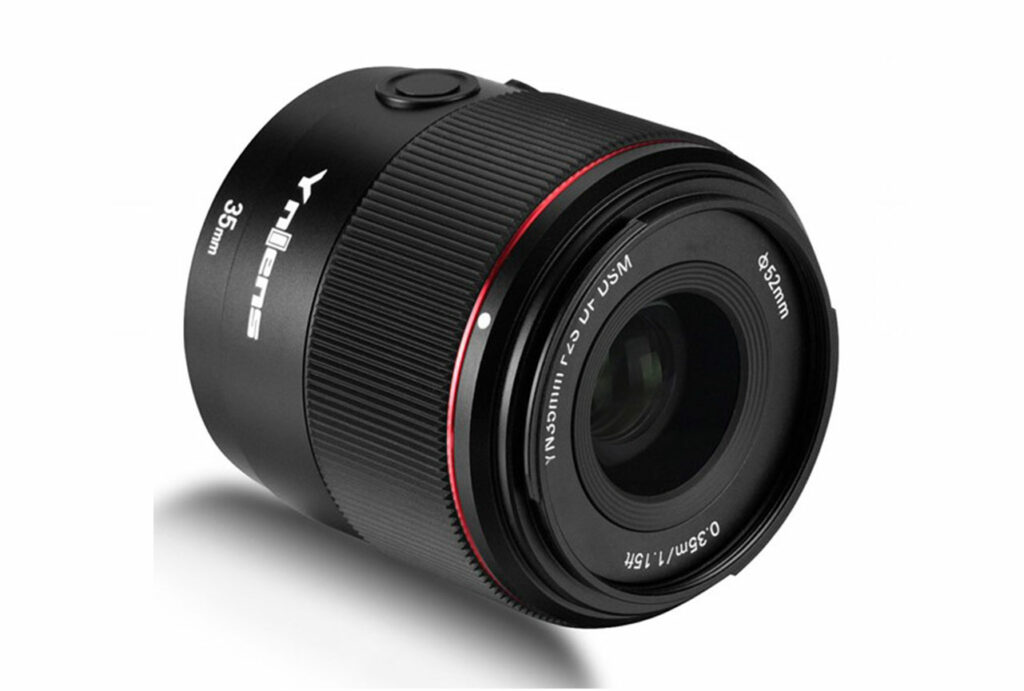


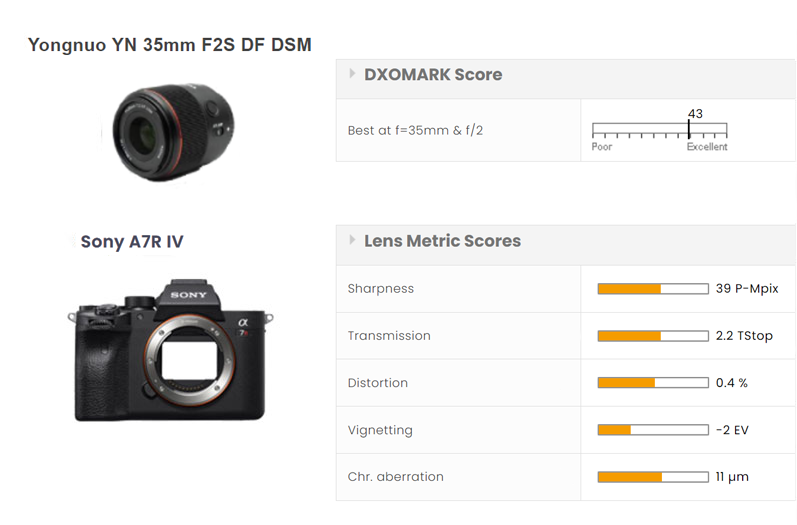
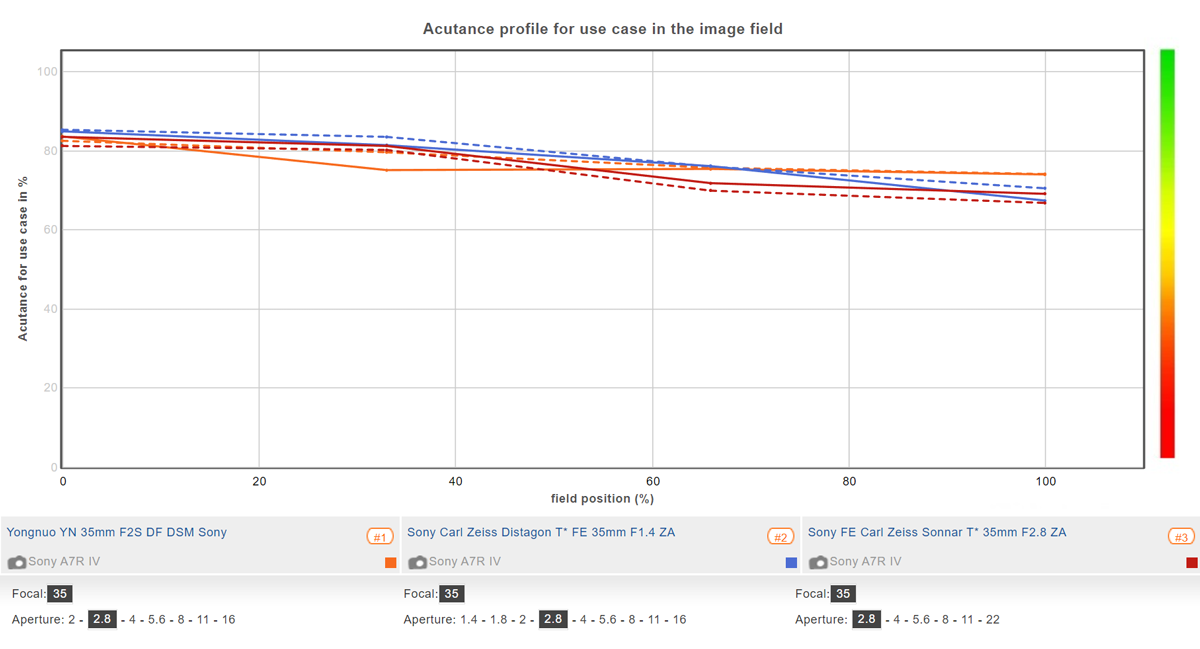
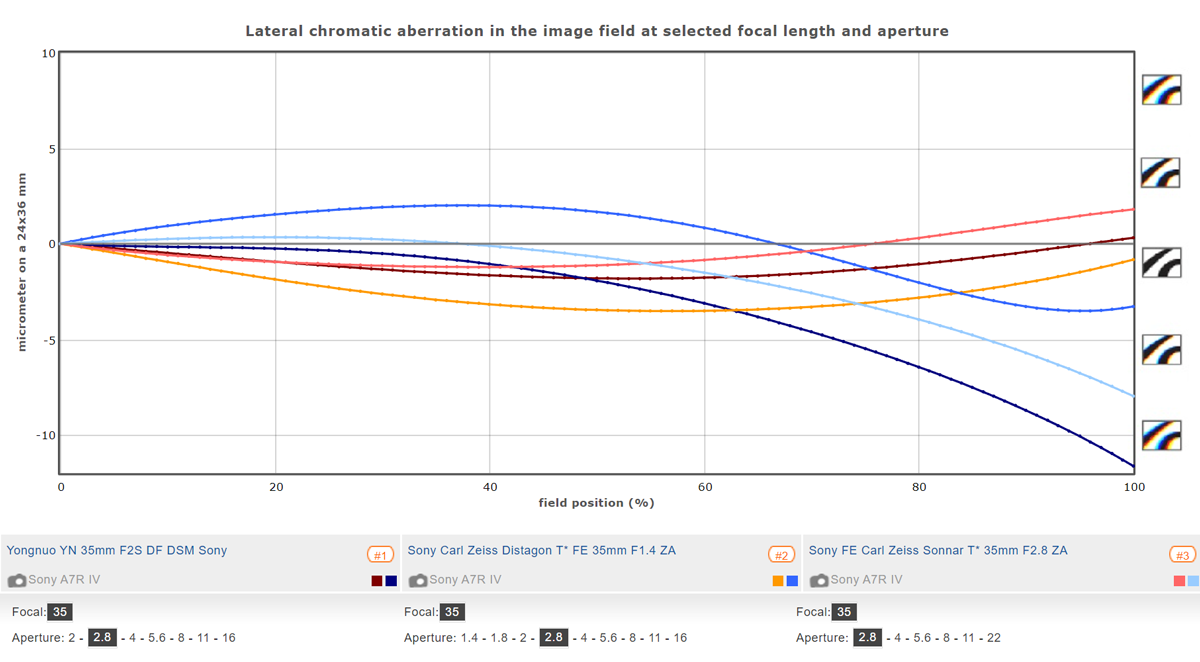
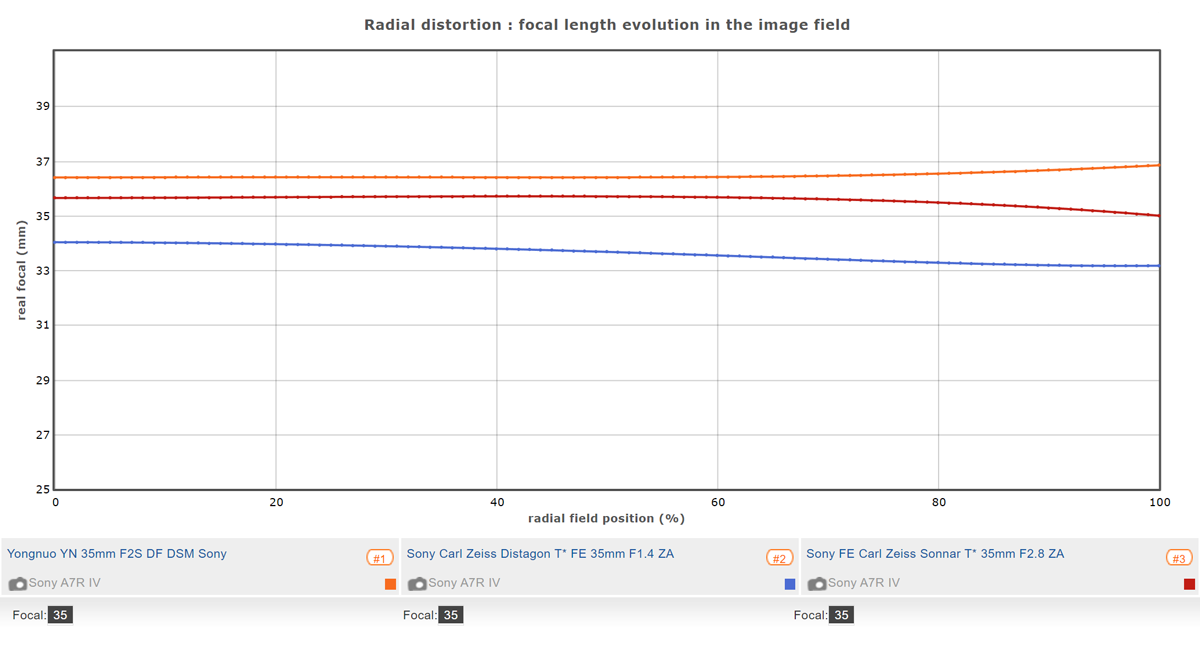
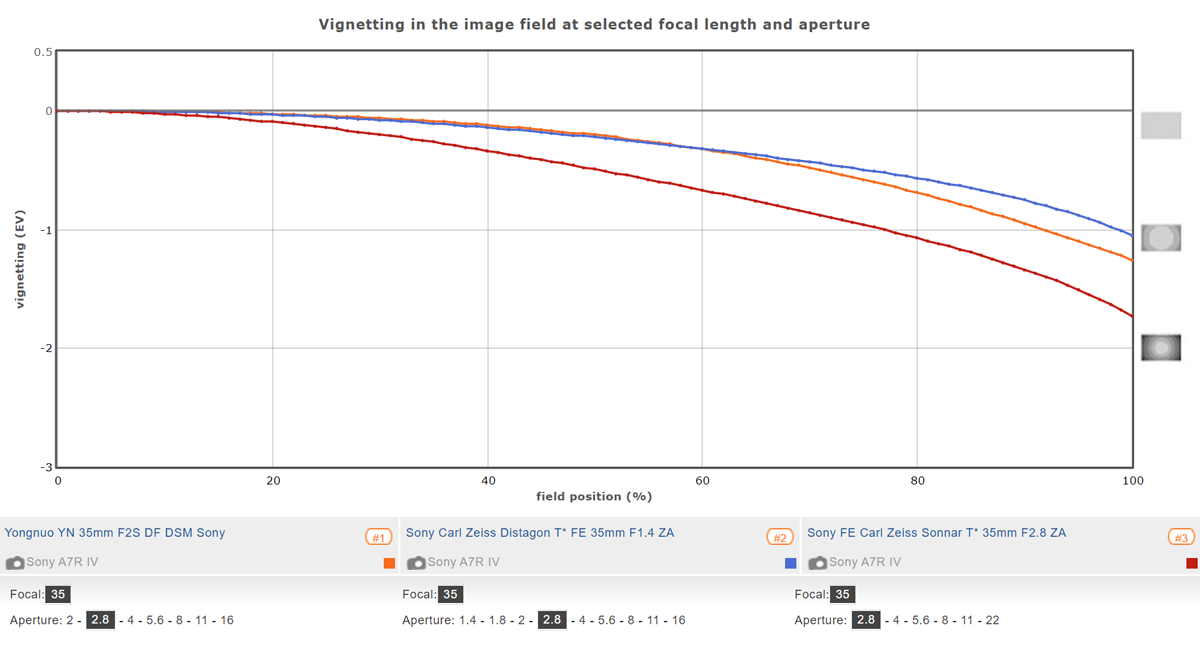
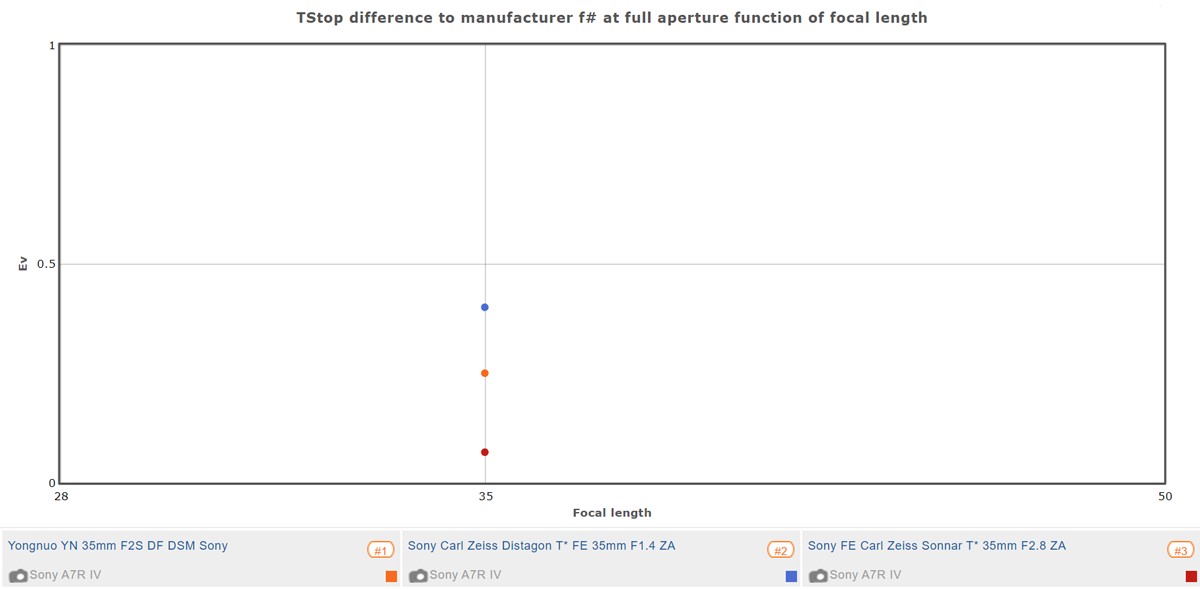
DXOMARK encourages its readers to share comments on the articles. To read or post comments, Disqus cookies are required. Change your Cookies Preferences and read more about our Comment Policy.